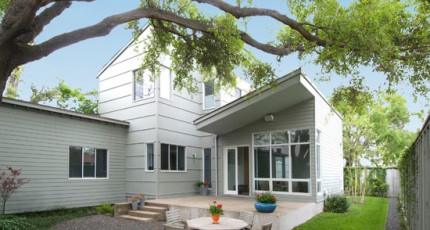Minimalist Garden Design



Minimalist design is a design style that takes a less is more approach to aesthetics. In landscaping, it refers to a subservience of content to form more than a specific style. Minimalism can be found in many different types of gardens and landscapes, including formal, French, Italian,Mediterranean, and small garden design. This is due to the fact that all of these styles originate with the Greeks and Romans designs, who were the first in Western Civilization to actively pursue minimalism in their civil engineering and landscaping projects. We could describe such minimalism as classical in the sense that it originated during classical times and was motivated by classical values.
One of the many reasons that the Romans adopted minimalist design in their cities and landscapes was to socially condition subject people into seeing the empire that taxed them as a safe, controlled environment that offered them a safer, more comfortable, and more predictable lifestyle than they would have living in their old villages and nomadic shelters. It was basically a subliminal message of sorts that said “Isn’t it great to be conquered by an empire that keeps you safe from all the bad stuff out there?” For the most part, the message worked extremely well.
Pliny the Younger had a garden whose minimalist design was distinguished by boxwoods that symmetrically balanced and divided his estate into different sections. He also had many topiaries shaped, as they are today, into the forms of wild animals. This had more than a decorative significance. During Pliny’s time, there were fewer people in the world–and far more predatory animals roaming about in the countryside. Lions, elephants, and leopards were not afraid of ancient people until guns were invented, so during ancient times, being ambushed by a predator was just as real of a threat as being ambushed by highwaymen. Shaping plants into animals was yet another way of showing that man had the power to not only overcome Nature, but directly manipulate its forms.
Of course, minimalist design was no longer needed for civil and social conditioning after the empire fell. European aristocracy continued the old traditions partly out of a love for posterity, and sometimes out of a megalomaniac desire to rebuild the Roman Empire. Such Humpty Dumpty politics never achieved their political goals, but they did lead to a diversification of classical garden and landscape designs into all of the many cultural forms we are familiar with today.
Again, while none of these forms have to be minimalist by nature, all of them share common classical roots and can be applied to Houston landscapes with minimalist intentions similar to those of classical landowners. We may not be afraid of Nature like our progenitors were, but we want more than ever to still feel like we are in control of it.
This obsession with controlling Nature has always been present with humanity since we made a conscious, collective decision not to be eaten at some previous mid-point halfway up food chain. However, over the past 150 years since the Industrial Revolution, we have become obsessed with controlling virtually every aspect of Nature. No longer are we looking to simply control wildlife and ecosystems, but the very laws of Nature itself. Consequently, the mathematical, the scientific, and the abstract have now replaced the organic and the symbolic elements of art and spirituality.
Geometry is more important than ever to minimalist design for these and many other reasons. It is the one link between what remains of the organic world, the architecture of the home, and the vast, unknown parameters of the human mind. Unlike their classical equivalents, these gardens and yards do more than simply try to control and limit natural growth. They actively seek to replace natural elements with inorganic structures such as hardscapes, rocks, gravel, statuary, and outdoor art. This challenges the viewer’s sense of order and reality, and forces the viewer to draw conclusions on an exclusively subjective basis.






